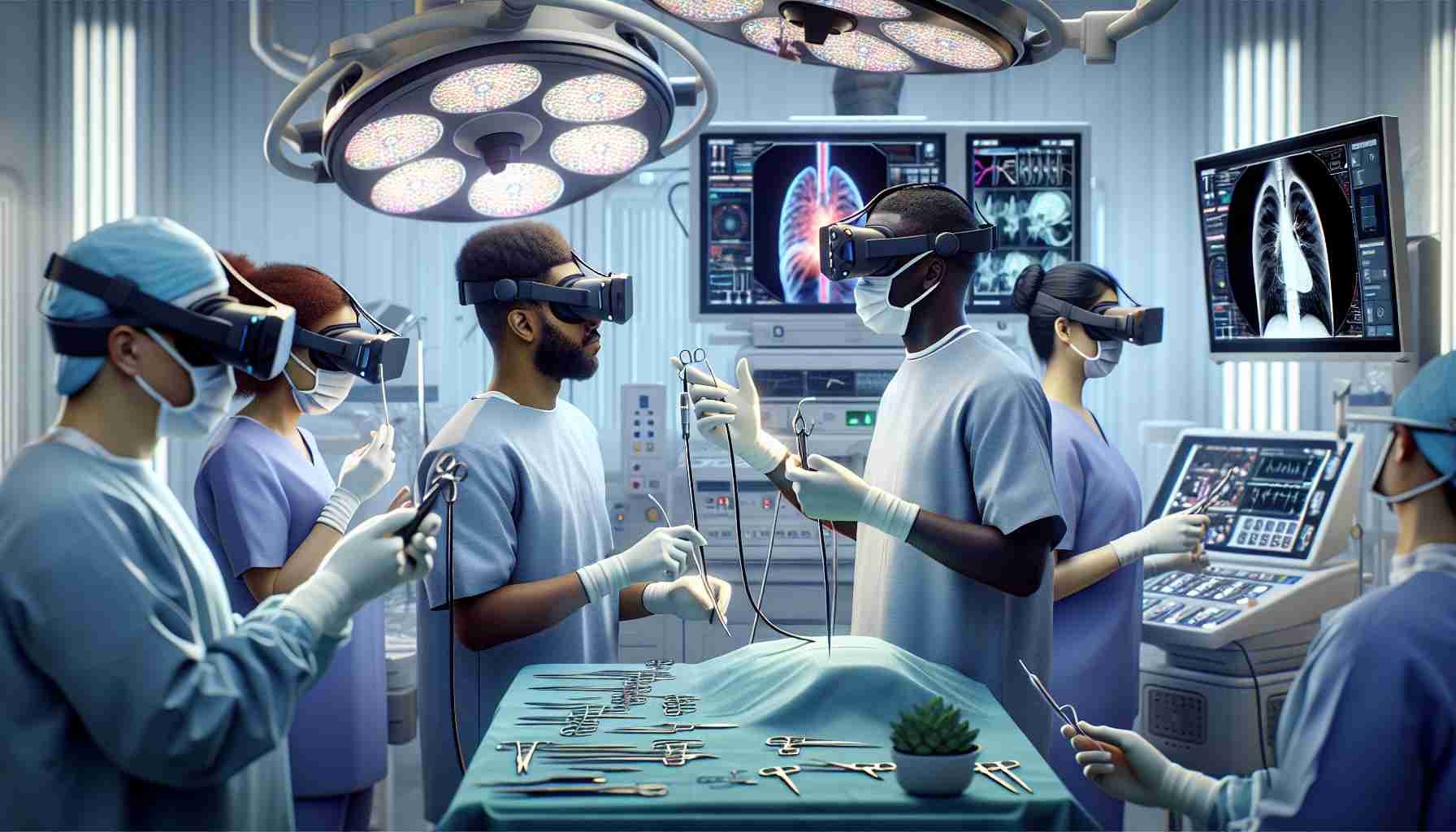Virtual Reality (VR) technology is revolutionizing medical education and training, creating immersive and realistic simulations that enhance learning outcomes for healthcare professionals. These VR medical simulations provide a safe and controlled environment for practicing procedures, improving skills, and ultimately enhancing patient outcomes. As the adoption of VR in medical training continues to increase, the market for VR medical simulation is experiencing remarkable growth.
According to market research, the global VR medical simulation market was valued at $954.6 million in 2022 and is projected to reach $8.5 billion by 2031, growing at a compound annual growth rate (CAGR) of 25.6%. This significant growth can be attributed to the integration of VR technology in medical training programs and the demand for efficient training methods. VR simulations allow for repetitive practice without the risk of harming patients, making them an essential tool in modern medical education.
The market is segmented by simulator type, including patient simulators, dental simulators, surgical simulators, and others. These simulators cater to diverse training needs and offer lifelike representations of human patients, realistic scenarios for dental procedures, and simulated surgical environments. The versatility of VR simulations ensures comprehensive medical education across different patient demographics.
There are several factors driving the growth of the VR medical simulation market. The benefits of VR technology in medical training, such as realistic and immersive learning experiences, reduced errors during patient care, and enhanced clinical competence, are widely recognized. Additionally, the COVID-19 pandemic has accelerated the adoption of VR technology as remote learning and virtual training became essential during lockdowns and social distancing measures.
However, the market also faces challenges such as high initial costs and technological limitations. The development and implementation of VR simulations require significant investment and advanced hardware and software. Smaller medical institutions may struggle to allocate funds for VR technology, and technological limitations can hinder widespread adoption. Overcoming these challenges and ensuring the accessibility and affordability of VR simulations is crucial for maximizing their potential in medical training.
The competitive landscape of the VR medical simulation market is intense, with key players continuously innovating and developing advanced simulations. For example, SimX offers a realistic, real-time training platform, while Osso VR focuses on highly detailed and interactive surgical simulations. North America currently holds a significant share of the market, driven by technology providers, established healthcare infrastructure, and a strong focus on medical education. Europe and the Asia-Pacific region are also experiencing growth, with the integration of VR technology in medical training programs and increasing investments in healthcare.
Looking to the future, the VR medical simulation market is set to benefit from the increasing adoption of VR in medical training, advancements in hardware and software, and personalized and patient-specific simulations. Technological innovations, such as haptic feedback systems and the integration of artificial intelligence and machine learning, will enhance the training experience. As the healthcare industry prioritizes patient safety and quality of care, the demand for advanced training solutions like VR medical simulations will continue to grow. Collaboration between healthcare institutions and VR technology providers will further drive the development and adoption of innovative training solutions.
Facts not mentioned in the article:
– Virtual reality (VR) medical training is not limited to just procedures and skills practice. It can also be used for patient education, allowing patients to better understand their conditions and treatment options.
– VR medical simulations can be tailored to specific medical specialties, allowing healthcare professionals to train in specialized areas such as cardiology, neurology, and orthopedics.
– The use of VR in medical training has expanded beyond just medical schools and teaching hospitals. Many healthcare organizations and clinics are incorporating VR simulations into their training programs to ensure ongoing professional development for their staff.
– VR medical training is not limited to just doctors and surgeons. It is also being used to train nurses, medical assistants, and other healthcare professionals, improving the overall quality of care.
Important questions and answers:
Q: How does VR medical training compare to traditional training methods?
A: VR medical training provides a more immersive and realistic learning experience compared to traditional classroom lectures or written materials. It allows for practical, hands-on practice in a safe environment while also integrating interactive and visual components that enhance knowledge retention.
Q: What are the key challenges associated with VR medical training?
A: One of the key challenges is the high initial cost of implementing VR technology, including the purchase of hardware and software. There is also a need for ongoing maintenance and updates. Additionally, there is a learning curve for healthcare professionals who may not be familiar with VR technology, requiring additional training and support. Ensuring the accessibility and affordability of VR training for all institutions and individuals is another challenge.
Advantages and disadvantages:
Advantages:
– Realistic and immersive learning experiences that enhance knowledge retention.
– Safe and controlled environment for practicing procedures without risking harm to patients.
– Ability to repeat and refine skills without the need for real patients.
– Remote training and virtual collaboration opportunities, especially useful during situations like the COVID-19 pandemic.
Disadvantages:
– High initial costs of implementation and maintenance.
– Technological limitations that may hinder widespread adoption.
– Learning curve for healthcare professionals unfamiliar with VR technology.
– Potential for the simulations to be too simplified or not fully representative of real-world scenarios.
Suggested related links:
– SimX – Realistic, real-time training platform.
– Osso VR – Highly detailed and interactive surgical simulations.



















